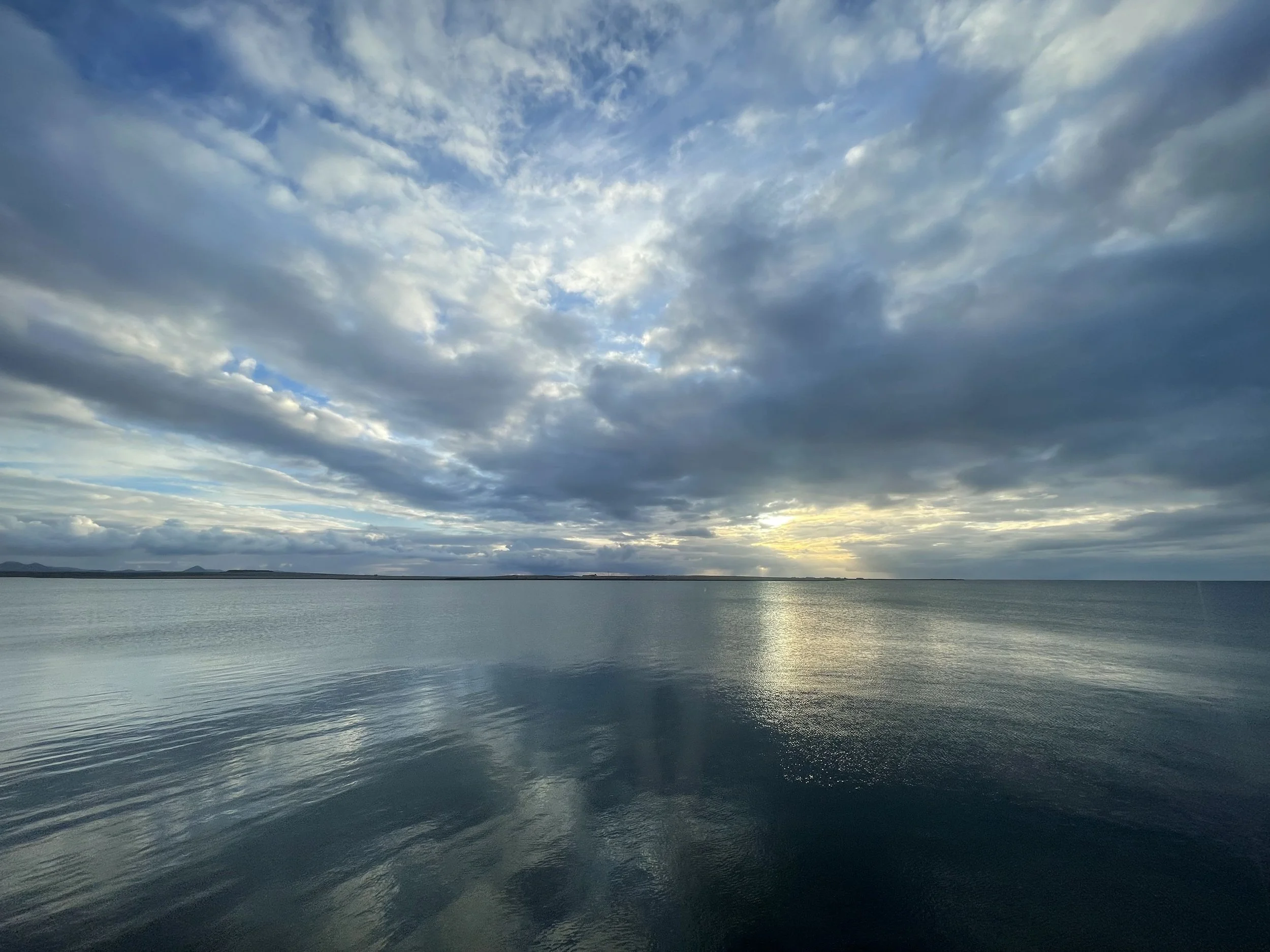I’ve always been intrigued by the language of poets, how, through poetic expression, we can reach people from other faiths where prose falls short. So nearly two years ago I launched an interfaith project
A band of birds of different species sets out on a perilous journey through the unknown, in search of their king. That is the story of The Conference of the Birds, the 12th century masterpiece of Persian poet Farid ud-Din Attar. Like Chaucer’s Canterbury Tales, it offers an amalgam of myths
To Be Still Enough
Perched on the high Himalayan
slopes of cloud-shrouded Darjeeling,
this gracious old hotel, built
in 1887 as the summer residence
of the Maharaja of Cooch Behar,
It’s been over a month since the armed assault on the Charlie Hebdo offices in Paris, and the tragedy has been on my mind every day since. There are many issues deserving reflection, from free speech versus hate speech, rising xenophobia and violent extremism, or even avoiding the conflation of all Muslims with the violently radical, yet tiny network of heretics. Yet, my mind has been preoccupied with a more overarching theme of the core mission of terrorism – terror itself. The goal is more than a body count; it’s the arousal of our most instinctual response in evolutionary psychology: fear, and where that fear will likely lead us.
“A gradual assimilation of religions will in time function as a world faith” was the prophecy that the Indian philosopher Sarvepalli Radhakrishnan made more than 80 years ago.
Bud Heckman, a frequent TIO contributor, has worked with many leading interreligious organizations, foundations, academic institutions, and community-based organizations.
London - Last August, two young Egyptian musicians released songs on the topic of sexual harassment against women, which has been on the rise since the 2011 uprising in Egypt. These musicians’ songs are two important examples of many similar, serious efforts by artists to help fight this problem.
When I was ten years old, a man who owned a small record label wanted to sign me after hearing me sing at a talent show where I went to school with his daughter. My Pentecostal Christian stepmother, bless her heart, was adamant that a gift like mine should only be “used for The Lord, not for the world.” My family moved shortly thereafter, alleviating me from facing the theological dilemma she’d imposed.
The best of music and theater transport us somewhere outside our own particular time and place, even beyond our own cultural and religious coordinates. By allowing us outside our own boundaries, they offer a chance for fresh insight and inspiration. Susan Stein’s one-woman play “Etty,” directed by Austin Pendleton, does just that. In this Amnesty International Award nominated play, actress Stein introduces us to a most remarkable and spiritually inquisitive young Dutch Jewish woman of the early 1940s. Drawn entirely from the dairies and letters of Etty Hillesum, we experience a remarkable kind of theater-as-time-travel.
The art of compelling storytelling is the core focus of the Hartley Film Foundation’s mission. Storytelling in documentary film is the foundation’s tool for connecting audiences to new experiences and ideas about real people, places, and events. The foundation supports filmmakers proposing narratives about world religions and spirituality. Implicitly, a primary Hartley goal is to strengthen interfaith understanding through these films.
During the month of February, Religions for Peace USA (RfPUSA) is releasing a series of short educational videos inspired by World Interfaith Harmony Week (WIHW). The videos are viewable here.
In 2014, RfPUSA and the El-Hibri Foundation (EHF) co-sponsored a “Best of Interfaith Webinar Series” for WIHW, featuring leading experts in the field. A short summary video of the highlights from that series is available here and the whole series is viewable here.
The Doctrine of Discovery which emerged from the Papal Bulls of 1452-1493 may be the most destructive ‘doctrine’ ever promoted by a religious institution, though few know about it today. For much of the 15th century the pope was the most powerful man in Europe, and these papal documents “provided legal sanction and promoted Christian conquest, colonization, and exploitation of non-Christian territories and peoples the world over,” as a report in this issue of TIO puts it.
An extraordinary global solidarity movement is happening today, providing a place for all to contribute. The movement represents a confluence of the indigenous and environmental movements (the “red” and the “green”). Joining forces, they are addressing the dire ecological issues humanity faces – food and water scarcity, climate disruption, droughts and flooding, species extinction, increased toxicity and health problems, and social division, to name a few.
The spiritual foundation of the reunion of the Condor and the Eagle is based in the understanding of the fundamental oneness and unity of all life. All members of the Human Family are part of the ancient Sacred Circle of Life. Since we are all part of the Sacred Circle of Life we are all Indigenous Peoples of our Mother Earth. This makes every Human Being responsible for the well-being of one another and for all living things upon Mother Earth.
My friend Jeremy Sher is a brilliant up-and-coming leader of the Reform rabbinical movement. He is working to create a vision of Judaism that is both inclusive and yet deeply spiritually fulfilling, a Judaism which rejects gender discrimination and insularity while embracing and upholding the primacy of the holy texts in Jewish life. Jeremy lives in Jaffa, the mostly Arab city that abuts Tel Aviv, genially going about the daily business of preparing for ordination, learning Hebrew, and completing a research fellowship while saying “shukran” (“thank you”) to his Arab neighbors and “toda” (“thank you”) to his Jewish neighbors. Jeremy is what it looks like when you have a smart, compassionate, religiously Jewish man who rejects parochial attitudes in favor of an open-minded and open-hearted commitment to tikkun olam, healing the world. You could probably say he’s my religious role model.
The best way to minister for the Earth is to help kids feel connected to the Earth. We have found the same thing to be true for adults. When you connect to the Earth, you connect with your ancestors. You connect with others and with the deepest part of yourself. You connect with all of life. That’s why we regularly celebrate the Pagan wheel of the year in our Sunday school program at Jubilee! Community Church in Asheville, North Carolina.
Often in the interfaith movement, we speak about the changes in the religious landscape and the impact these sociological, religious and political shifts have on the movement. Rarely, however, do we get the chance to hear from young leaders of the movement who spend time thinking about and challenging our expectations of what it means to be a leader in the interfaith movement today.
Gold and green balloons strained to be released and soar into the sky at midday on Friday, January 30, at the entrance to the Pico Union Synagogue in Los Angeles, one of the oldest synagogues in LA, now an interfaith and multicultural arts center that regularly hosts multiple religious communities. This house of worship, with its huge multicolored stained-glass Star of David, was about to become the weekly home of the first all-women’s mosque in America and the site of the first jummah prayer in LA led exclusively by women.
Imagine this elephant picture as the human brain. The rider on top – he represents conscious processes. Out of all of the brain’s activity, he seemingly directs everything, allowing us to “know” what we are doing. The rest of the elephant? It represents the unconscious aspects of our brain, the parts that we don’t have so much information about. Surprising, isn’t it? Here we thought that we lived in a rational age where cognitive science had at least figured out much of what there is to know about the brain. Actually, it’s quite the opposite.
As an interfaith-active Wiccan who has developed strong relationships with indigenous leaders, I’m familiar with the uncomfortable silences that can jar relationships between indigenous practitioners and institutional religionists. Something is missing. You’re in the same room but don’t know how to talk to each other. Here are some suggestions to bridging that spiritual gap.





